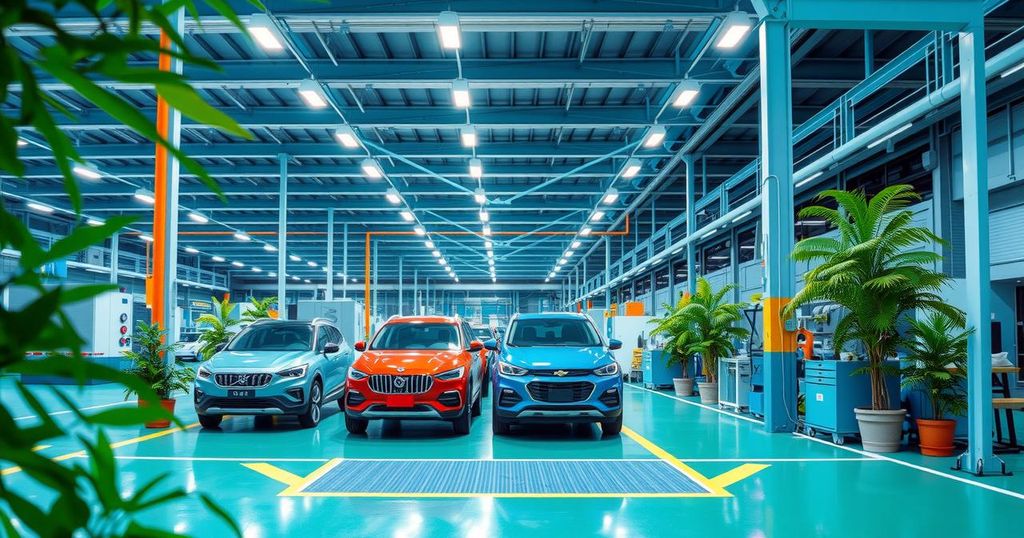Chinese Automakers Target Malaysia for Tariff-Friendly Market Expansion

Chinese automakers are targeting Malaysia and Southeast Asia as tariff-friendly regions, enabling competitive vehicle imports and advanced EV technology for consumers. This trend intensifies competition for local brands like Perodua, amid challenges from rising operational costs and currency fluctuations. Manufacturers such as BYD and Chery are rapidly gaining market shares, reinforcing the importance of Southeast Asia in the global automotive landscape in the face of U.S.-China trade tensions.
Chinese automakers are increasingly targeting Malaysia and other Southeast Asian nations as they seek tariff-friendly regions to reduce the impact of high tariffs imposed by markets such as the United States and Europe. This strategic pivot aims to facilitate increased imports of Chinese vehicles, potentially offering consumers more competitively priced options and access to advanced electric vehicle (EV) technology. However, this shift may intensify competition for both domestic and international automotive brands operating in Malaysia.
Prominent Chinese companies, including BYD and Chery, have begun to challenge established brands from Japan, South Korea, and Europe in Malaysia. While Malaysia itself remains relatively unaffected by U.S. tariffs, it still faces indirect challenges, such as rising operational costs and currency fluctuations that may impact the overall automotive sector.
The migration of Chinese automobile manufacturers to Southeast Asia reflects a broader industrial trend where manufacturing sectors, including electronics and textiles, move to minimize tariffs. SAIC Motor, known for its MG brand, made a significant investment by establishing a $310 million factory near Bangkok in 2018—this move set the tone for other manufacturers. MG has since gained substantial market share, surpassing established competitors like Suzuki within nine months.
Additionally, other carmakers like BYD and Chery are rapidly emerging in Malaysia’s market. Chery is already recognized as the third best-selling non-national automotive brand within just 18 months of entry. The BAIC-Amber Dual joint venture also signifies the increasing trend of Chinese automotive production in Malaysia, with plans to manufacture 2,000-3,000 EVs annually at their Gurun facility.
While Thailand and Malaysia vie for dominance as electric vehicle manufacturing hubs in the face of increasing regional demand, both nations must carefully balance the allure of attracting Chinese investments while safeguarding their local automobile sectors from foreign competition. Malaysia’s own Perodua brand continues to hold its ground through competitive pricing and a focus on local content, helping to insulate itself from the pressures of fluctuating currency and import costs.
The rapid growth of Chinese EV manufacturers in Southeast Asia is evident, with these companies accounting for 75% of the electric vehicles sold in the region during the first quarter of 2024. As the competitive landscape evolves, non-national automakers in Malaysia witnessed a 2.3% decline in sales despite an overall market growth of 20.6%, with Chinese brands securing a significant portion of this growth.
Amid ongoing U.S.-China trade tensions, Southeast Asian nations are keen to position themselves as viable manufacturing alternatives as businesses look to diversify supply chains away from China. The trade relationship between China and Southeast Asia has expanded significantly, rising from $40 billion in 2000 to an anticipated $1 trillion by 2020, indicating a strong economic dependence.
Redirecting Chinese products from the U.S. markets could lead to an influx of these goods in Southeast Asia, creating diverse opportunities and vulnerabilities. Recent diplomatic engagements by Chinese President Xi Jinping across Southeast Asian nations underline the region’s increasing importance to China amidst trade challenges.
This evolving landscape in the automotive sector demonstrates the strategic movements by Chinese EV firms like BYD, NIO, and XPeng as they explore new markets amidst barriers in their traditional channels. ASEAN nations are focusing on fostering intra-regional collaboration to navigate these complex trade dynamics and capitalize on the benefits while minimizing any economic disruptions.
In summary, the strategic shift of Chinese automakers towards Malaysia and Southeast Asia emerges as a response to tariff challenges in Western markets. This trend not only promotes competitive pricing and advanced technology for consumers but also heightens the competition faced by local automotive brands. The region’s robust trade relations and strategic investments highlight the growing significance of Southeast Asia in the global automotive market, while necessitating careful management of local industry protection as fierce competition looms.
Original Source: www.techinasia.com




